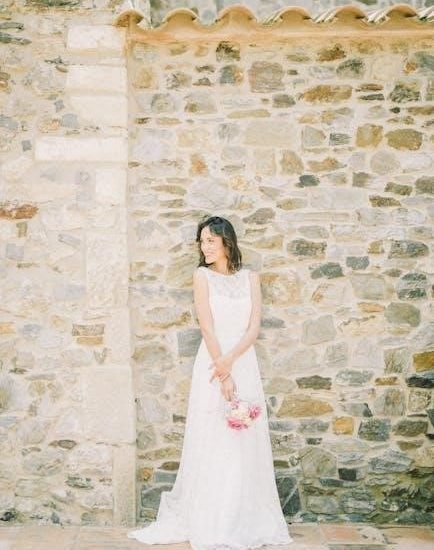Dress length is a crucial element in fashion, influencing style, comfort, and appropriateness for various occasions. This guide explores how different lengths enhance aesthetics and functionality.
Importance of Dress Length in Fashion
Dress length plays a vital role in fashion, as it directly impacts the overall aesthetic and functionality of an outfit. The right length can enhance proportions, create balance, and ensure comfort. It also reflects personal style and adherence to cultural or social norms. Dress length influences how fabrics drape and how accessories are incorporated, making it a key consideration for both casual and formal wear. Understanding the importance of dress length helps individuals make informed choices, ensuring their attire is both flattering and appropriate for any occasion.
Understanding Different Dress Lengths
Understanding dress lengths is essential for creating a balanced and stylish wardrobe. Common lengths include mini, midi, and maxi dresses, each offering unique versatility. Mini dresses typically fall above the knee, perfect for casual outings. Midi dresses reach the mid-calf, blending elegance with practicality, while maxi dresses flow to the floor, ideal for formal events; Tea-length dresses hit just below the knee, offering a vintage charm. High-low dresses combine shorter fronts with longer backs, adding a modern twist. Each length caters to different body types, occasions, and personal styles, making them versatile for various fashion needs.
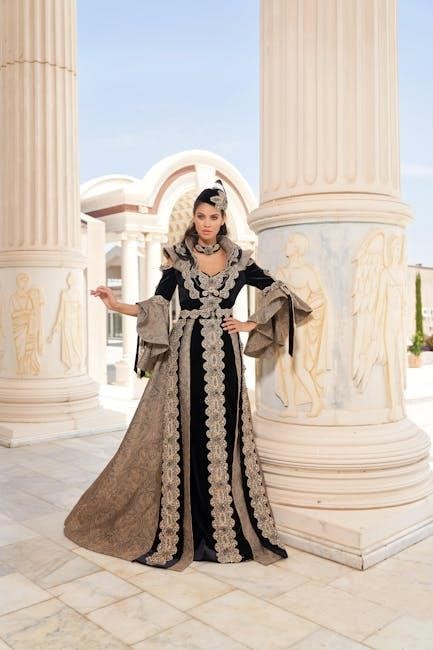
History of Dress Lengths
Dress lengths have evolved significantly over centuries, influenced by cultural norms, social status, and shifting fashion trends, reflecting the dynamic nature of style and identity.
Evolution of Dress Lengths Through Centuries
Dress lengths have transformed significantly over centuries, reflecting societal values and cultural shifts. In ancient times, floor-sweeping robes symbolized modesty and status. During the Middle Ages, long gowns were a staple, while the Renaissance introduced structured silhouettes with slight lifts in hems. The 18th century saw the rise of hoop petticoats, elongating dresses, and elaborate trains. By the 19th century, the bustle era emphasized volume, but practicality soon led to shorter hemlines. The 20th century marked a revolution, with the 1920s flapper era popularizing shorter dresses, symbolizing liberation. Today, dress lengths vary widely, from mini to maxi, catering to diverse styles and preferences.
Cultural Influences on Dress Lengths
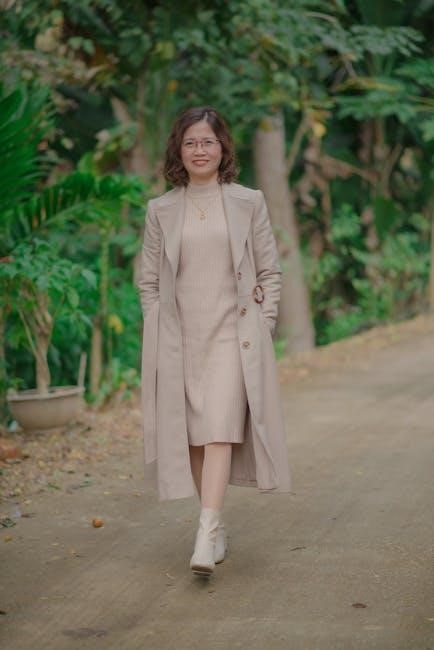
Cultural norms and traditions deeply influence dress lengths, reflecting values and beliefs. In many Middle Eastern and Asian cultures, modesty dictates longer hemlines, while Western fashion often embraces shorter styles. Historical contexts, such as Victorian-era constraints on women, have shaped preferences. Religious practices also play a role, with certain faiths requiring longer, more modest attire. Additionally, regional climates and social hierarchies have historically influenced dress length choices. These cultural factors continue to inspire modern fashion, blending tradition with contemporary trends to create diverse and meaningful wardrobe options for individuals worldwide.
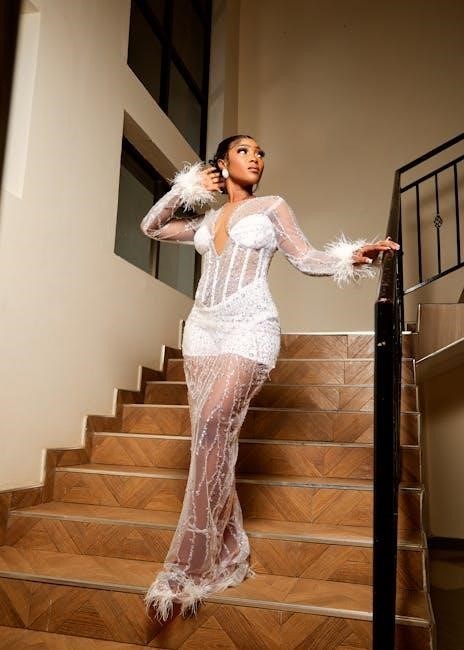
Types of Dress Lengths
Dresses vary in length, offering diverse styles to suit preferences and occasions. Common types include mini, midi, maxi, tea-length, and high-low hemlines, each with unique appeal.
Mini dresses are a popular choice, typically hitting above the knee, offering a youthful and trendy vibe. They are perfect for showcasing statement shoes or creating a balanced silhouette. Ideal for casual outings, parties, or warm weather, mini dresses can be styled with tights or jackets for versatility. Their short length emphasizes confidence and modern style, making them a staple in many wardrobes. Whether bold or simple, mini dresses are a versatile option for various occasions, blending comfort with fashion seamlessly.
Midi dresses fall just above the calf, offering a timeless and versatile option. They are ideal for both formal and casual events, providing elegance while maintaining practicality. This length flatters most body types, creating a balanced silhouette. Styling options include pairing with heels for a polished look or flats for a relaxed vibe. Accessories like belts or jackets can enhance the outfit. Midi dresses are perfect for showcasing shoes or adding tights for seasonal adaptability. Their moderate length ensures comfort and sophistication, making them a wardrobe staple for various occasions and personal styles.
Maxi dresses are a chic and comfortable option, extending to the ankles for a flowing, elegant look. They are perfect for warm weather and casual outings, offering coverage and style. Maxi dresses suit various body types, creating a balanced silhouette. Lightweight fabrics like cotton or chiffon enhance breathability, while heavier materials work well for cooler seasons. Pair with sandals for a relaxed vibe or heels for a more polished appearance. Accessories like belts or jewelry can accentuate the waist or add flair. Maxi dresses are versatile, suitable for both daytime and evening events, making them a wardrobe essential for effortless sophistication and comfort.
Tea-length dresses fall just below the knee, offering a classic and timeless silhouette. Ideal for formal or semi-formal events, they create a balanced proportion, flattering most body types. The midi length skims the calves, creating a modest yet stylish appearance. Perfect for spring and summer, tea-length dresses can be paired with heels or flats, depending on the occasion. Adding a belt enhances the waistline, while lightweight fabrics like chiffon or cotton ensure comfort. This versatile style is suitable for various settings, from weddings to garden parties, making it a timeless addition to any wardrobe.
High-Low (Asymmetrical) Dresses
High-low, or asymmetrical, dresses feature a shorter front hem and a longer back hem, creating a trendy yet elegant look. This style offers a modern twist on traditional dresses while maintaining versatility. It flatters various body types by elongating the legs and drawing attention to the upper body. Pair with heels for a sophisticated appearance or flats for a casual vibe. Perfect for semi-formal events or everyday wear, high-low dresses are a chic choice that blends comfort with fashion. Their unique design makes them stand out, making them a popular option for those seeking a fresh, contemporary style;
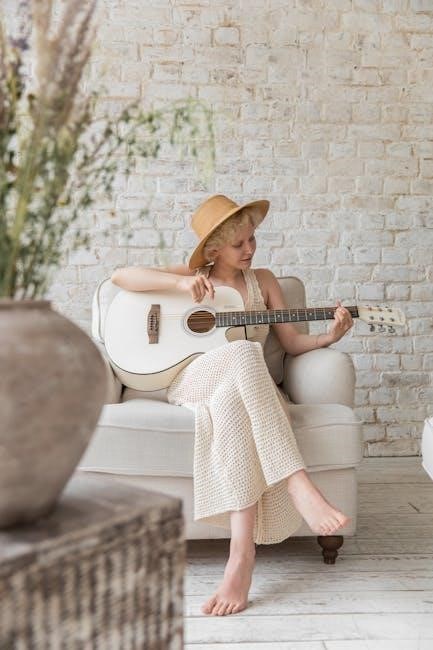
Factors Influencing Dress Length Choice
Dress length choice is shaped by body type, occasion, cultural norms, and trends. These factors ensure the dress is both flattering and appropriate for the event.
Body Type and Proportions
Dress length plays a significant role in flattering various body types. Petite women benefit from shorter or midi dresses that elongate their frame, while taller individuals can embrace maxi styles. Hourglass figures shine in fitted, knee-length dresses that accentuate curves. Pear-shaped bodies look balanced in A-line midi dresses, and rectangular frames can add shape with asymmetrical hemlines. Understanding proportions ensures the dress complements the wearer’s physique, creating a harmonious and polished look. Tailoring and fit are key to enhancing natural beauty through strategic dress length choices.
Occasion and Event Type
Dress length is often dictated by the occasion, ensuring appropriateness and style. Formal events like weddings or galas may call for floor-sweeping maxi dresses, while casual gatherings might suit mini or midi styles. Workplace events often favor knee-length or midi dresses for professionalism. Evening parties may lean toward glamorous maxi or high-low designs, while daytime outings could opt for shorter, breathable options. The venue, time of day, and event formality are key factors in selecting the ideal dress length, ensuring the outfit aligns with the setting and creates a polished, fitting look for the occasion.
Cultural and Social Norms
Cultural and social norms significantly influence dress length preferences, reflecting values and traditions. In some cultures, modesty dictates longer hemlines, while others embrace shorter lengths as a fashion statement. Social expectations often shape what is deemed appropriate, with certain lengths associated with specific settings or events. For instance, religious or conservative environments may favor maxi dresses, while trendy, liberal societies might celebrate mini styles. These norms create unspoken guidelines, guiding individuals in choosing dress lengths that align with cultural identity and social acceptance, ensuring their attire is respectful and fitting within their community’s standards and expectations.
Current Fashion Trends
Current fashion trends showcase a variety of dress lengths, catering to diverse preferences and body types. Midi dresses, falling just below the knee, remain popular for their versatility and timeless appeal. Maxi dresses continue to dominate, offering elegance and comfort, especially during warmer seasons. Mini dresses are experiencing a resurgence, embracing a playful, retro vibe. High-low and asymmetrical hemlines add a modern twist, while layered or tiered dresses create dynamic silhouettes. Utility and oversized dresses are also trending, blending practicality with style. These trends highlight the fashion industry’s adaptability, ensuring there’s a dress length for every occasion, body type, and personal aesthetic, reflecting the latest runway and celebrity influences.
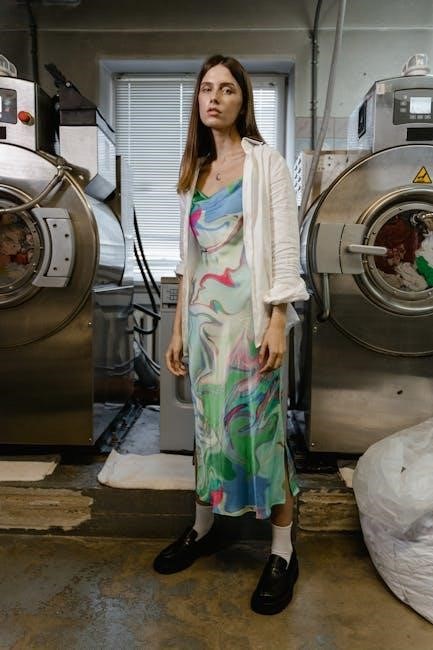
How to Choose the Right Dress Length
Selecting the ideal dress length involves considering body type, occasion, and personal style; Measure accurately, ensure balance, and prioritize comfort for a flattering, confident fit.
Measuring for the Perfect Fit
Accurate measurements are key to determining the ideal dress length. Start by measuring your height and natural waistline. For mini dresses, the hem should hit just above the knee, while midi dresses fall below the calf. Maxi dresses typically reach the ankle, and tea-length dresses land mid-calf. High-low dresses vary, with the front shorter and the back longer. Use a flexible tape measure, ensuring it’s level for precise results. Consider fabric drape and heel height when choosing the final length to ensure a balanced, flattering silhouette.
Considering Personal Style and Comfort
When selecting a dress length, personal style and comfort are paramount. Consider your body type—mini dresses flatter shorter legs, while maxi dresses elongate petite frames. Reflect on your lifestyle; active individuals may prefer shorter lengths for ease of movement. Fabric choice also impacts comfort, with lightweight materials suiting warm weather and heavier fabrics offering structure. Ultimately, choose a length that aligns with your confidence and daily needs, ensuring the dress feels like an extension of your personality while providing comfort throughout the day.
Pairing with Shoes and Accessories
When pairing shoes and accessories with dresses, consider the dress length to create a balanced look. For mini dresses, opt for high heels or heeled ankle boots to elongate the legs, and keep accessories simple with delicate jewelry or a small handbag. Midi dresses look great with flats like loafers or ballet flats for a casual vibe, or heeled sandals for a dressier look, paired with a belt and statement earrings. Maxi dresses complement sandals or wedges, enhanced with a wide-brimmed hat or layered necklaces for a bohemian feel. Tea-length dresses pair well with pumps or heeled boots, accessorized with a clutch and bracelets. For high-low dresses, sleek flats or low heels work best, with asymmetrical accessories like an off-shoulder bag. Remember, the choice of shoes and accessories should enhance the outfit without overwhelming it, considering both the occasion and personal style.
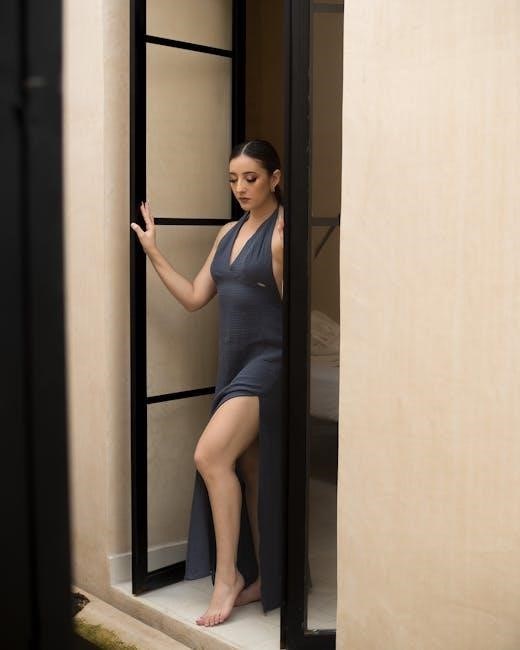
Styling Tips for Different Dress Lengths
Dress lengths can dramatically enhance your look. Balance proportions, highlight your best features, and ensure confidence. Harmony with personal style and occasion is key for a polished appearance.
Mini Dresses
Mini dresses are a chic and versatile option, perfect for showcasing confidence and style. Pair them with tights or leggings for cooler weather, or go bare-legged for a summery vibe. Opt for heels to elongate your legs or sneakers for a casual look. Belted mini dresses can cinch your waist, while A-line styles skim over the hips, creating a balanced silhouette. Layer with a jacket or cardigan for a polished finish. Accessorize wisely—statement jewelry or a crossbody bag can elevate the outfit. Embrace mini dresses for their youthful charm and endless styling possibilities, ensuring they hit just above the knee for a flattering fit.
Midi Dresses
Midi dresses fall between mini and maxi lengths, typically reaching mid-calf or just below the knee. They are universally flattering, creating a balanced silhouette for most body types. A-line midi dresses skim over the hips, while sheath styles highlight curves. Pair with heels for elegance or flats for a relaxed look. Layer with a blazer or cardigan for professionalism. Opt for bold patterns or bright colors to make a statement. Midi dresses are versatile, suitable for both daytime events and evening outings. Their modest yet stylish design makes them a wardrobe staple, offering comfort and sophistication in equal measure.
Maxi Dresses
Maxi dresses are floor-sweeping or ankle-length, offering both elegance and comfort. Ideal for warm weather, they provide coverage while keeping you cool. Available in various necklines and sleeve styles, maxi dresses suit diverse preferences. Pair with heeled sandals for a formal look or flats for casual outings. Accessories like belts or statement jewelry can enhance their appeal. Perfect for tall and petite frames alike, maxi dresses create a balanced silhouette. Their versatility makes them suitable for beach trips, evening events, or everyday wear, ensuring a stylish and practical choice for any occasion.
Tea-Length Dresses
Tea-length dresses, typically falling just above the knee, offer a classic and timeless appeal. Originating in the 1950s, they symbolize elegance and femininity, with a nod to vintage sophistication. Ideal for both formal and semi-formal events, these dresses can be styled with intricate details like lace for luxury or subtle prints for understatement. Pair with heels for a polished look or flats for casual charm. Accessorize with a belt to accentuate the waist and jewelry that complements the dress. Versatile for various body types, tea-length dresses balance proportions, making them suitable for weddings, garden parties, or daytime gatherings, blending tradition with modern flare.
High-Low Dresses
High-low dresses, also known as asymmetrical or mullet dresses, feature a shorter front hem and a longer back hem, creating a striking, modern silhouette. This style offers a balance of edginess and elegance, making it versatile for various occasions. The shorter front elongates the legs, while the longer back provides coverage and sophistication. Ideal for casual outings or semi-formal events, high-low dresses can be paired with heels for a glamorous look or flats for a relaxed vibe. Accessorize with a belt to define the waist or add statement jewelry for a polished finish, ensuring a chic and contemporary appearance suitable for diverse settings and personal styles.
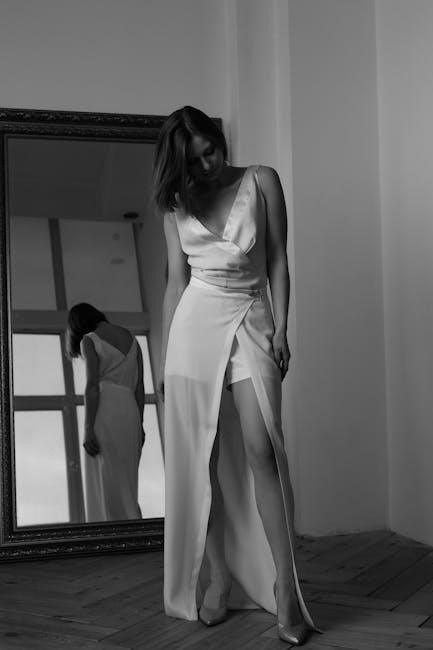
Common Mistakes to Avoid
Avoid choosing dress lengths that don’t flatter your body type, ignoring event dress codes, and neglecting fabric suitability for the season. These mistakes can ruin an outfit.
Choosing the Wrong Length for Your Body Type
Choosing the wrong dress length can unflatter your body type. For petite women, overly long dresses can overwhelm, while short dresses may emphasize lack of height. Tall individuals should avoid midis that cut the leg awkwardly. Hourglass figures benefit from waist-accentuating tea-length or midi dresses. Pear-shaped bodies look best in A-line minis or high-lows. Apple-shaped torsos should opt for asymmetrical hemlines or maxis. Ignoring proportions leads to imbalance. Use measurements to ensure the perfect fit, balancing your silhouette for a polished, confident look.
Ignoring the Event Dress Code
Ignoring the event dress code can lead to wardrobe mishaps, making you appear inappropriate or disrespectful. Whether it’s a wedding, formal gala, or casual gathering, dress codes often specify acceptable attire. Failing to adhere to these guidelines may result in standing out awkwardly or feeling out of place. Always research the event’s dress code beforehand and select a dress length that aligns with the occasion’s formality. For instance, a mini dress may be unsuitable for a formal event, while a maxi dress might be too casual for a business meeting. Tailoring your choice ensures you fit in seamlessly and make a positive impression. Fashion experts emphasize the importance of matching your attire to the event’s expectations for a polished and respectful look.
Not Considering Fabric and Season
Overlooking fabric type and seasonal appropriateness can significantly impact the overall look and comfort of a dress. Lightweight fabrics like cotton or linen are ideal for warm weather, while heavier materials such as wool or velvet suit colder seasons. Pairing the wrong fabric with the season can make a dress feel uncomfortable or visually out of place. For example, a thick, dark maxi dress in summer may appear heavy, whereas a sheer mini dress in winter might seem impractical. Aligning fabric choice with the season ensures both style and comfort, making your outfit more suitable for the environment and occasion.
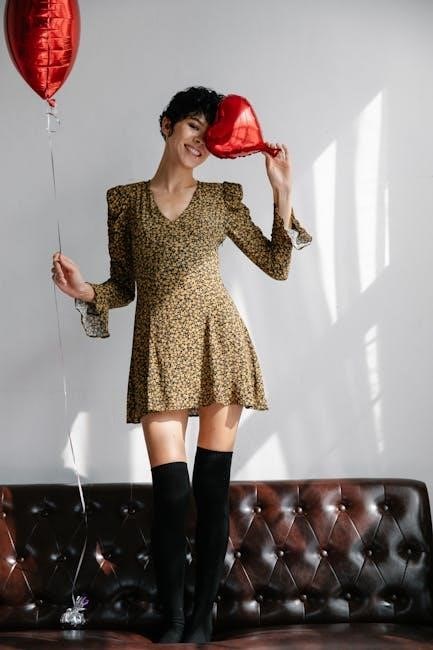
Dress Length Trends
Dress lengths evolve seasonally, with midi and maxi styles dominating current trends. Mini and tea-length dresses remain timeless, while high-low hemlines offer contemporary flair, blending versatility with fashion.
Current Season Trends
This season, midi and maxi dresses dominate the fashion scene, offering elegance and comfort. Mini dresses remain popular for casual outings, while tea-length styles provide vintage charm. Asymmetrical hemlines add a modern twist, blending practicality with trendiness. Cultural influences and occasion-specific designs shape these trends, ensuring versatility. Whether for formal events or everyday wear, current dress lengths cater to diverse preferences, making them a staple in wardrobes worldwide. Their adaptability to fabrics and seasons further enhances their appeal, creating a balanced blend of style and functionality.
Future Trends in Dress Lengths
Future trends in dress lengths are expected to emphasize sustainability and versatility. Designers are exploring adaptive hemlines that suit multiple body types and occasions, blending functionality with aesthetics. Asymmetrical and high-low designs may evolve to incorporate innovative fabrics and eco-friendly materials. Mini dresses could see a resurgence with bold, vibrant patterns, while maxi and midi styles might feature streamlined silhouettes for a modern look. Cultural influences will continue to shape these trends, ensuring a diverse and inclusive approach to fashion. The focus will remain on creating timeless pieces that adapt to changing seasonal demands while maintaining comfort and style.
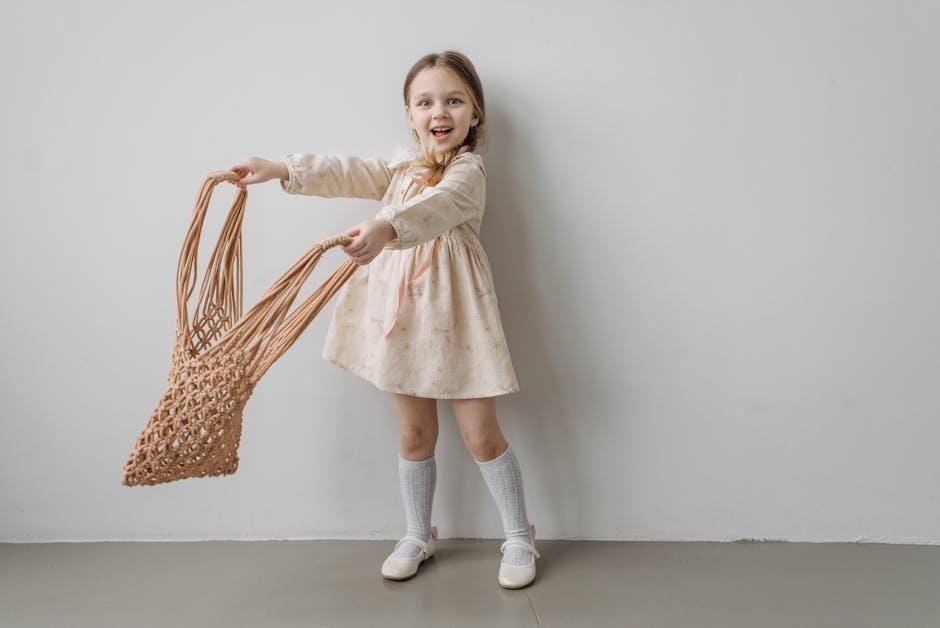
Care and Maintenance
Proper care extends a dress’s life. Clean according to fabric, store neatly, and consider alterations for fit. Regular maintenance ensures longevity and preserves style.
How to Clean and Store Different Dress Lengths
Cleaning and storing dresses vary by fabric and length. For delicate fabrics like silk or chiffon, hand wash or dry clean. Cotton and linen can machine wash. Store dresses in breathable bags or closets, avoiding direct sunlight. Fold or hang based on length—mini and midi dresses can be folded, while maxi dresses prefer hangers. Use moth-repellent sachets for long-term storage. Regular steaming maintains shape without harsh chemicals. Proper care ensures dresses remain vibrant and well-fitted for years.
Alterations and Tailoring Tips
Professional tailoring enhances fit and style. Take dresses to a tailor for adjustments like hemming, waist tightening, or dart placements. Consider fabric type—delicate materials may require hand stitching. Pre-wash fabrics before alterations to ensure shrinkage accuracy. For DIY alterations, use matching threads and needles suitable for the fabric. Regularly check seams for wear and repair promptly. Tailoring transforms off-the-rack dresses into custom fits, ensuring comfort and a polished look. Proper alterations preserve the dress’s integrity while achieving a flawless silhouette.
Understanding dress lengths is essential for style and comfort. This guide helps you find the perfect fit for every occasion, enhancing your wardrobe effortlessly.
Final Thoughts on Dress Length Guide
Encouragement to Experiment with Different Styles
Experimenting with different dress lengths is a great way to refresh your wardrobe and discover new styles. Whether you prefer mini, midi, maxi, or tea-length dresses, each offers unique versatility. Don’t hesitate to explore how different lengths complement your body type and personal aesthetic. Mixing and matching with shoes, accessories, and occasions can elevate your outfits and boost confidence. Embrace the freedom to try new looks—after all, fashion is about self-expression and creativity. By stepping out of your comfort zone, you might uncover a style that becomes your signature look, making your wardrobe truly unforgettable.

